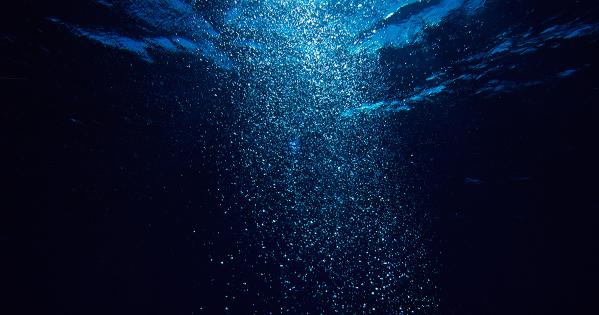Deep Sea Exploration May Hold Clues to Climate Warming, Origins of Life, and More

The tragic implosion of the deep-sea tourist submersible Titan on June 18 illuminated the dangers of deep-sea expeditions. At the same time, the notion of exploring the ocean's depths – one of the last unknown frontiers – captured the world’s imagination. What unknown species live in its deepest waters? Are our ocean ecosystems affected by a warming climate? What mysteries can we solve through deep-sea exploration? What answers can be found on the ocean’s floors?

“The deep ocean is a mysterious and other worldly place where much is unknown, so of course people are drawn to it,” says Stephen MacAvoy, associate professor in American University’s Department of Environmental Science. In the late 1990s and early 2000’s, MacAvoy’s research took him to the Gulf of Mexico to conduct research on deep-sea tubeworm communities (some six-feet-long and hundreds of years old) and the food webs that sustain them.
We asked Professor MacAvoy to share his experiences in deep sea research and explain some of the dangers and rewards faced by scientists researching deep sea biodiversity.
Q. We know more about the surface of the moon than we do about the deep ocean. Why is the deep ocean still so unexplored?
A. While we know a fair amount of the bathymetry (underwater topography) of the oceans, it is very hard to get down there. As you descend, the pressure increases by one atmosphere (14.7 pounds per square inch) every 33 feet, and only a few submersibles in the world can reach the deep ocean off the continental shelves. Additionally, even if you do manage to get to the bottom, it is completely dark.
Q. What type of deep-sea research did you conduct?

A. The work I was involved with investigated communities of animals first discovered in the late 1980s and early 1990s. These communities are in the Gulf of Mexico, and those I helped investigate are around one mile down from the ocean’s surface (but they extend to much greater depths). Creatures there use chemical energy from hydrogen sulfide and methane to make sugar (chemosynthesis) as opposed to light energy used to make sugar (photosynthesis). We call these "hydrocarbon seep" communities because they seem to form where oil naturally seeps from the sediments.
Down there in the complete darkness and freezing cold (a few degrees above 0°C), there were large densities of entirely new animal species living with entirely new bacterial species. The communities were complex, diverse, and stable for long periods. Some worm species (Lamellibrachia luymesi, Seepiophila jonesi, and Escarpia laminata) were six feet long and hundreds of years old! My job was to figure out food webs around the communities and determine how important chemosynthetic production was to the surrounding deep ocean.
Q. What was the experience like?

A. The submersible we used, the Johnson Sea Link, held four people and was mostly used in the oil and gas industry. It was perfect for exploring the deep-sea communities though because it had suction and clamping appendages, video and still photography, excellent lighting, a rotating array of collection chambers, and could take water samples at depth through probes. The rear of the submersible was very tight and was like laying down in a six-by-two-foot metal pipe. The front chamber was an acrylic sphere allowing full visibility in almost all directions. We could communicate with the support ship, but GPS doesn't work below water, so there was some guess work about where you were and where the support ship was. It was dangerous but the crews were amazing and made sure the scientists didn't mess things up too badly!
Q. What discoveries might be found under the sea? Is it possible that deep-sea exploration could hold some clues to critical issues like climate change and extinction?
A. Science questions abound in the deep-sea sphere. How important is chemosynthesis (making sugar from chemical energy) as opposed to photosynthesis (making sugar from light’s energy) in deep sea communities? What kind of minerals exist as the Earth's crust transitions to the semi-molten mantle? Could life have originated in deep sea hydrothermal vents where biological building blocks and chemical energy abound? How and where does the deep sea synthesize or concentrate rare-earth minerals? These are all big questions, and to find the answers, people must go down there. But it is not taken lightly and is understood to be dangerous.
Scientists are investigating climate change and extinction by using ocean sediment cores. One of the neat things about the sediments is that you can investigate extinctions and climate for the same time period and test for links between the two.
Another area of interest is mining the ocean for rare earth metals for use in the electronics industry (including the growing alternative energy sector). Deep hydrothermal vents occur in areas where the sea floor is spreading and may be home to organisms yielding clues to the origins of life. So, there are lots of big mysteries to be investigated, and I have no doubt that more surprises are in store as exploration continues.
